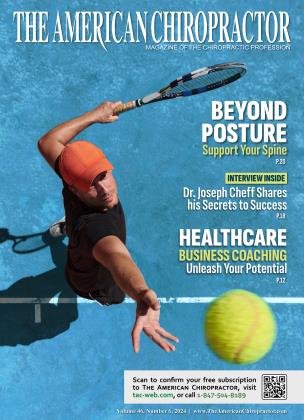Laser Therapy for Hashimoto’s Thyroiditis
By Ryan Novak, DC
Even though the FDA hasn’t cleared any laser or photobiomodulation therapy devices for the treatment of Hashimoto’s thyroiditis, a good amount of recent evidence points to its possible future clinical relevance.
Hashimoto’s thyroiditis is estimated to be 0.3-1.5 cases per 1,000 persons worldwide. In the last few years, many practitioners would agree that they’ve seen a dramatic uptick in concomitant digestive issues and Hashimoto’s thyroiditis cases walking through their clinic doors, especially in the 30-to-50-year-old female population.
In an older study published in 2012 in ISRN Endocrinology titled “Assessment of the Effects of Low-Level Laser Therapy on the Thyroid Vascularization of Patients with Autoimmune Hypothyroidism by Color Doppler Ultrasound,” the results of the small 43-participant study concluded that low-level infrared laser irradiation can ameliorate thyroid parenchyma vascularization with treatments two times a week for five weeks. In 2018, a long-term follow-up study was published, concluding that low-level laser therapy has shown to be a safe treatment for hypothyroidism from chronic autoimmune thyroiditis.
In 2020, a larger groundbreaking study of 350 participants was published in Photobiomodulation Photomedicine Laser Surgery titled “Impact of Photobiomodulation on T3/T4 Ratio and Quality of Life in Hashimoto Thyroiditis.” The study concluded that photobiomodulation therapy is 70 times more effective at increasing T3/T4 ratios and 15 times more effective at decreasing levothyroxine dosage than using dietary supplements alone.
Lastly, in 2023, another groundbreaking study was published in the Journal of Personalized Medicine titled “Efficacy of Combined Photobiomodulation Therapy with Supplements versus Supplements Alone in Restoring Thyroid Gland Homeostasis in Hashimoto’s Thyroiditis: A Clinical Feasibility Parallel Trial with Six Months Follow-Up.” Four points on each lobe of the thyroid gland were treated with an infrared laser delivering 32 J/cm2 per point twice a week for three consecutive weeks in conjunction with dietary supplements. The six-month follow-up appointment showed the restoration of thyroid function for the first time, which included a statistically significant improvement in losing weight, BMI, hip-to-waist circumference, waist-hip ratio, TSH, antiTPO, and antiTG, and a decrease in the treatment dose of levothyroxine.
These studies must make a practitioner think about a new realm of future possibilities for the hypothyroid patient. No FDA-cleared laser or photobiomodulation therapy devices are currently cleared for the treatment of Hashimoto’s thyroiditis in the United States, and it is also an absolute contraindication to treat over the thyroid gland in general with laser or photobiomodulation devices, especially in those with active cancer or a history of cancer.
About the Author
Dr. Ryan Novak is the chief scientific officer (CSO) for a photobiomodulation therapy device manufacturing firm, which has developed FDA-compliant devices such as the PainBuster Super Pulsed Laser. Visit painbusterlaser.com or email [email protected].
 View Full Issue
View Full Issue












